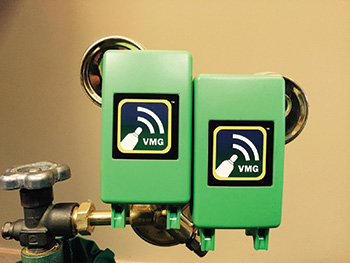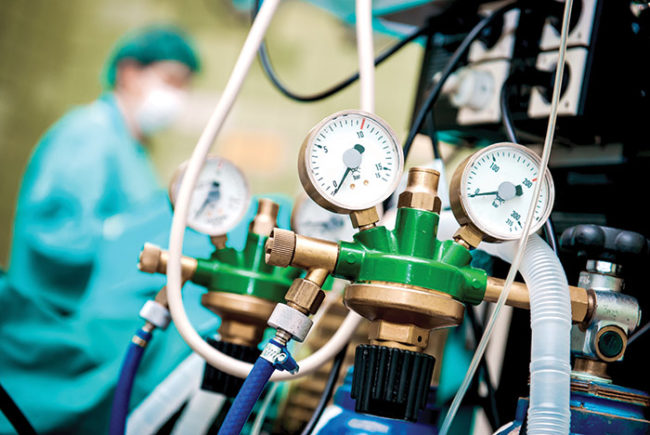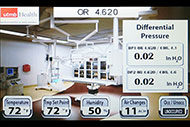 |
| The wireless gas monitoring system sends data to alert facilities staff and vendor. | Photo courtesy of Vendor Managed Gas |
Hospital operating room (OR) management requires meeting a variety of challenges: occupancy, start-time compliance, supply assurance, efficient staffing, and patient and staff safety.
Cincinnati Children’s Hospital Medical Center (CCHMC) utilizes wireless technology that helps the hospital to manage its OR and remotely monitor the level and operational status of medical gases.
CCHMC already was working with Wright Brothers Inc., Cincinnati, which supplies the hospital with nitrogen used for anesthesia, lifts and air tools used in the OR. Wright Brothers, which produces, sells and distributes specialty gases, partnered with Verizon to set up a vendor-managed gas (VMG) telemetry.
Utilizing Verizon’s wireless network, VMG provides around-the-clock monitoring of CCHMC’s nitrogen bulk tank and sends alerts on gas levels, temperature, pressure and other performance data directly to both hospital facility managers and Wright Brothers personnel.
Sensors installed on gas tanks and cylinders send radio-frequency transmission to a cellular device that transmits data, which is accessible from any device that can connect to the Internet.
Hospitals are required to monitor levels of hazardous gases and vapors to verify that they are within a safe range as determined by federal, state and local regulations.
“VMG is the first affordable plug-and-play wireless telemetry that simultaneously monitors tank levels and gas system performance using cellular and radio-frequency technology,” says Charlie Wright, CEO, Wright Brothers.
Compliance challenge |
| HOSPITAL // Cincinnati Children’s Hospital Medical Center NEED // OR medical gas monitoring compliance with applicable regulations SOLUTION // Wireless vendor-managed gas telemetry system from Wright Brothers and Verizon |
“The advantage for CCHMC and other medical facilities is that the notifications come directly to us — their gas vendor — so we can identify and repair a problem before it becomes a larger issue,” Wright says.
Wright Brothers installed the system, customized the alerts based on the hospital’s needs and monitors the bulk tank, standby system and emergency backup.
“The installation was simple with no inconvenience to the staff or hospitals,” says Robert Schultz, regulatory specialist, facilities, CCHMC. “Since the installation, we no longer have to be concerned with ordering gas or calling them if there is a concern. The system has proven to be reliable.”
The VMG system also provides a wide range of analytics to benchmark performance and indicate future need, enabling CCHMC to forecast for budget and peak usage times. “The fact that we can get on the system and look at the numbers is great for trending purposes,” Schultz says.
This advanced data helped to solve a problem with CCHMC’s bulk tank almost immediately. As in many operating rooms, a lot of gas was used during peak hours during the day, but was then shut off or significantly reduced after the regular schedule was complete.
Upon being shut off or reduced, the pressure in the bulk tank built up and the gas vented out of the safeties. By accessing the pressure data provided by the VMG system, Wright Brothers determined that the venting was causing the safety equipment to freeze open.
Rather than mistakenly refilling the tank or addressing other issues, Wright Brothers modified the safety equipment to correct the problem quickly.
Central to VMG’s performance is Verizon’s wireless network. Because monitoring the gas systems is important, Wright Brothers sought a wireless partner that provided the best coverage.
“Simply put, Verizon’s network is mandatory for what we do,” says Mike Ahrens, VMG technical lead, Wright Brothers. “We don’t exist without the coverage.”





